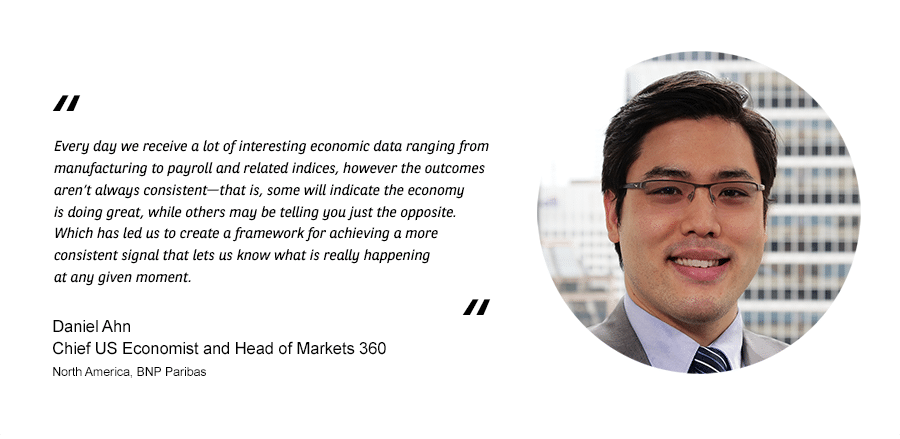With the major indices in record
territory and ongoing Fed easing keeping interest rates at historical lows, the quant approach is increasingly seen by managers and clients as a viable
method for successfully navigating volatile
equity valuations, reduced yields and, in the event of a more pronounced pullback, lower
overall returns.
One panelist highlighted that challenges continue
to beset the global economy, making it
increasingly difficult to locate sound investment choices. While the Fed and
other central banks may continue to slash rates, “sooner or later we’re going
to reach the end of the current monetary cycle,” said the participant, at
which point equities could suddenly appear overvalued, many having only been supported
by a massive balance-sheet expansion.
In
preparation for a total shift
in market dynamics, conference attendees considered the merits of different quantitative
strategies, from quantamental (the blending of quantitative and
fundamental/judgmental disciplines) and short-term catalyst-driven
opportunities, to diversified equity factor investing (or DEFI) for achieving
an optimal combination of human decision-making and machine learning. The quantamental
approach continues to garner widespread praise, and at the conference was regularly
cited for its ability to fuse the strengths of disparate strategies, and with
the continued growth of Artificial Intelligence (AI) is likely to reveal additional
benefits over the near term. Participants also considered the impact that
quant has had on environmental, social & governance (ESG) and other
emerging investment platforms, as well as the ability for AI to achieve greater efficiency in
terms of integrating big data within an asset-management context.
In his
opening remarks, Steve Nawrocki, Head of Equities, BNP Paribas, said that the
quant space continues to grow and is constantly evolving. “Years ago when BNP
Paribas was an early starter in
the quant business, we tended to think of quant as a niche area, something
that was mainly for specialists,” said Nawrocki. “Today it is a methodology
that interacts with almost every asset class, and we now have myriad
approaches as well.” With the investment environment continually in flux, it
is important that managers utilize solutions that are both robust and
innovative in order to properly capture these changes. “A strategy that is
only geared towards achieving returns in the short term isn’t good enough,”
said Nawrocki, “which is why we’re looking for durable tools that can adapt
with the marketplace, including developing solutions in cooperation with our
clients and our product partners.”
The importance
of maintaining such an ecosystem cannot be overstated, said Nawrocki. “We
cannot deliver innovation without our partners—if they are not involved, a lot
of these products would never come to market. Which is why we continue working
together, pooling our combined strengths and collective ideas in order to take
on the challenges we’re all facing, using solutions designed with the future
in mind.”
Reducing Risk
As the bull market continues into its latter stages, investors are increasingly searching for new ways to diversify away from risky assets. This in turn has led many to seek alternative sources of returns in government bonds. When doing so a number of factors must be considered, such as using defensive investing to achieve long-term performance consistency, as well as carry, value and reversal (whereby changing yields causes overbought/oversold assets to revert to fair value over time).According to Julien Turc, Head of the QIS Lab, BNP Paribas, this has meant revisiting the foundations for factor investing in fixed-income instruments, including determining which factors worked best from both a theoretical and empirical standpoint. During the discussion “Beyond carry and momentum in government bonds,” Turc described how he and his colleagues sought an approach to defensive investing based around the safe-haven nature of government bonds, and subsequently devised indices and strategies which have been launched over the last several years. “Here, value and a reversal factor can be used in tandem with carry and momentum to achieve bond returns independent of longer-term interest rate movements,” said Turc, whose findings are part of the recent paper “Beyond Carry and Momentum in Government Bonds (co-authored with BNP Paribas’ Jerome Gava and William Lefebvre).
In her presentation “Which fixed income systematic strategies in the current context?,” Karen Mrejen, Fixed Income QIS, BNP Paribas, discussed specific quantitative approaches that the bank currently relies on to exploit fixed-income opportunities. These include a fixed income beta enhancer (FIBE) covering long-only dynamic-market exposures; credit low-volatility indices for smart beta; as well as a fixed income diversifier (FIND) for obtaining uncorrelated absolute returns.
“Defensive in nature, all products are geared toward late-market cycles and cover the full spectrum of credit and rate exposures,” said Mrejen. For example, Mrejen explained how the long-only, highly diversified FIBE beta enhancer employs a hedging mechanism that automatically trims investment exposures during sustained market downdrafts, while also seeking to optimize credit and rates-market carry and rolldown premiums. “Similarly, the credit low-volatility strategy seeks to get out ahead of credit-deterioration risk during a market retraction, while concurrently offering an alternative source of systematic alpha.”

Following the Trends
For his part, Michael Sneyd, Head of Macro Quant and Derivatives Strategy, BNP Paribas, brought participants up to date with current trends in quant analytics, covering areas such as macro quant and systematic global macro strategies for use in portfolio construction and risk management, as well as factor, risk-premia and discretionary investing. As quant demand continues to grow, Sneyd sees further opportunities in the making, with investors potentially using quant analysis for fine-tuning environmental, social and governance (ESG) portfolios, as well as creating transactional and text-based data sets.That said, ranking processes and other elements that have long been part of the quant experience remain in place today, he added. “I think this speaks to the growing power of technology we’ve seen of late—with more machine-learning techniques, AI capabilities and code available, there are many more factors that we are now able to go out and explore.”
For instance, using quant approaches as an input for traditional discretionary processes has been a key growth area, remarked Sneyd. “Particularly over the last several years we’ve had investors incorporating quants as a way of processing data more efficiently and in greater volume.” Quants are also seen as a way to bring more evidence into the decision-making process, said Sneyd, as well as reduce costs while also mitigating “keyman risk” around portfolio management.
With Eurozone rates entering negative territory and US yields matching 2016 lows, global bond investors continue to struggle to find the right formula, said Yannick Daniel, Head of Multi-Asset QIS, BNP Paribas, during the segment “Multi-asset trend strategies, or a strategy to benefit from rate movements.” “Yield has been a scarce resource in G10 sovereign-bond markets for quite some time,” said Daniel, “with a sluggish US economy, along with signs of recession in Europe, triggering accommodative monetary policies on both sides of the Atlantic.” As a result, long-only investors face an ongoing dilemma: remain exposed to government-backed instruments, or increase exposures to higher-yield corporate bonds.
One possible alternative: trend-following strategies, which have the potential to generate alpha at a reduced cost when compared to discretionary alpha sources. “Recently we have seen trend and momentum-based strategies work quite well on both the short and longer-term end of the yield curve,” said Daniel. Such strategies can be tailored to fit specific investment approaches and risk profiles, with indices ranging from equities and credit to commodities and more. Additionally, said Daniel, bond investors seeking trend alpha while minimizing duration risk may consider a bespoke CTX strategy with duration controls set to a specified time period.

Meanwhile, new developments in “nowcasting”— from the meteorological term describing current rather than future weather conditions—are allowing quant teams to bring more of a systematic approach to interpreting daily high-frequency economic numbers. In his presentation “Nowcasting: Linking in between macro fundamentals and high-frequency data,” Dr. Daniel P. Ahn, Chief US Economist, Head of Markets 360 North America, BNP Paribas, described efforts to build upon the strengths of different dynamic models, one with “classic” filters similar to those employed by the New York Fed, the other using more of a machine-learning approach.
Pairing these two dissimilar yet complimentary algorithmic methods allows the team to sift through the combined data, said Ahn, observing when non-linearities haven’t been properly captured, while also mitigating weaknesses using a discretionary overlay to achieve a more accurate wrap-around view. “In this way we are able to ‘unplug’ portions of the models when we disagree with what the models are telling us,” noted Ahn. “Every day we receive a lot of interesting economic data ranging from manufacturing to payroll and related indices, however the outcomes aren’t always consistent—that is, some will indicate the economy is doing great, while others may be telling you just the opposite. Which has led us to create a framework for achieving a more consistent signal that lets us know what is really happening at any given moment.”

